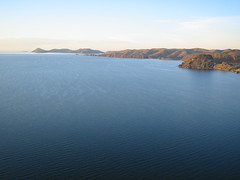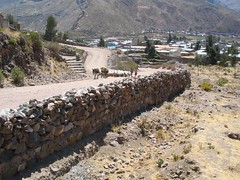Arequipa, a jewel set in the wide valleys of southern Peru Andean plateau, is known from the Peruvians as the white city. A quiet and hospitable city, where to acclimatize before the rise in remote parts of the Andes. The drown tops of three volcanoes brush the city, the misti (gentleman, with its perfectly conical shape), the Chachani (beloved) and Picchu Picchu (high high) in the Quechua language. In the basement at the Convent of Santa Catalina, in an eternal embrace, lies the mummy of a girl (nicknamed Juanita, or Inca ice maiden) sacrificed in a ritual at Mount Ampato by the Incas 500 years ago. The encounter with a “viejo loco”, as he introduced himself, gives us a glimpse of Latin America, sitting in a tiny square of Arequipa, under the shade of some orange trees in bloom, we begin a long conversation on the life and traditions of the Andes and Arequipa. He traveled widely as a young man, being a street artist, and his memories are still bright. We discussed the magical combination of moods, colors, flavors, music and experiences that brings the traveler in his pilgrimage. In Arequipa it’s easy to meet lots of people, also because the climate is very hospitable. We receive an invitation to the home of a boy, out of town. We get to know their grandparents, who take care of alfalfa and corn fields and prepare for us a rich and delicious lunch accompanied by abundant traditional chicha, a fermented drink produced from corn. Sitting around the fire we eat and listen with interest the story of their lives, amid joys and sacrifices. After lunch, we learn the basics needed to play the Quena, the typical flute used in Andean music.



